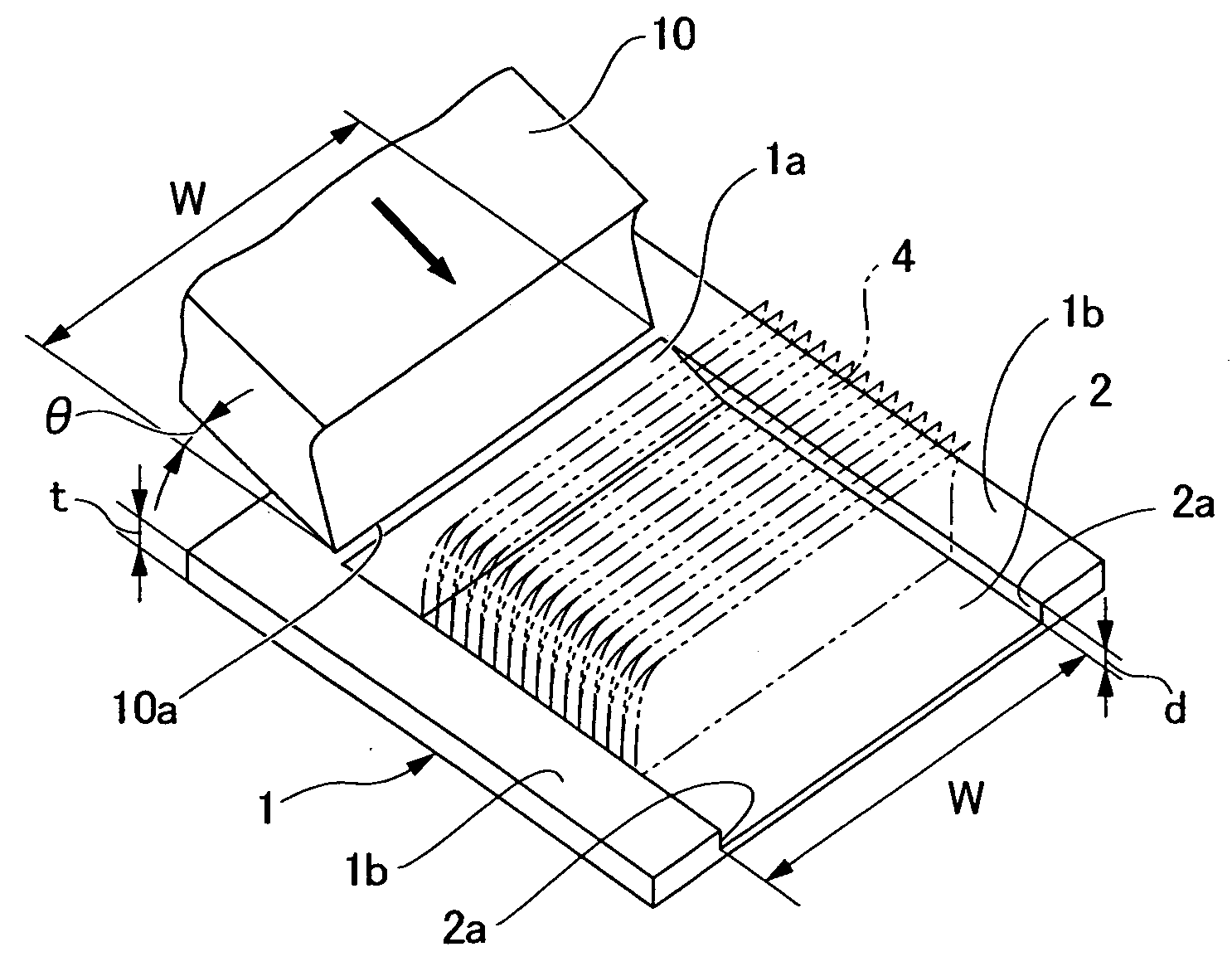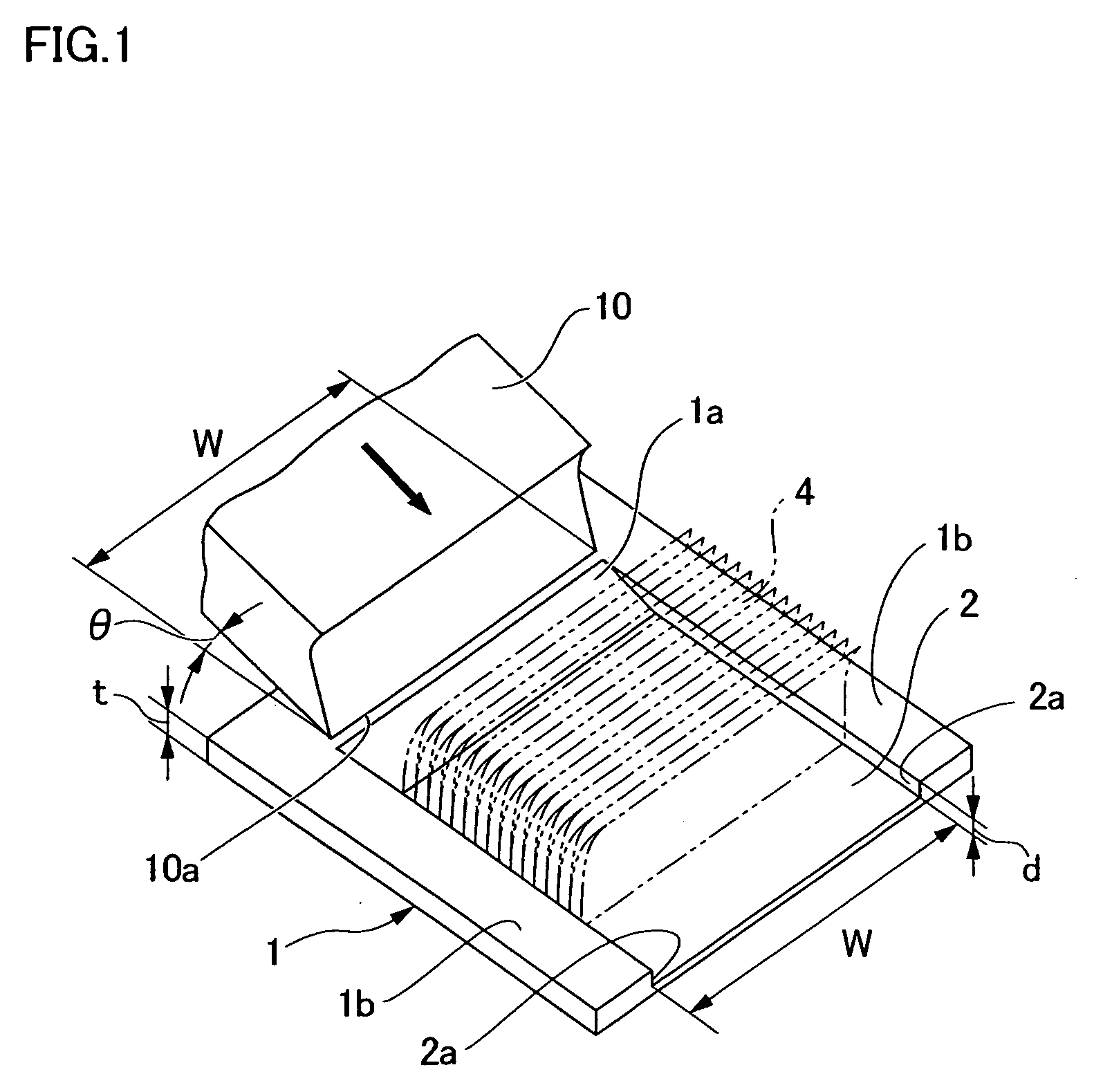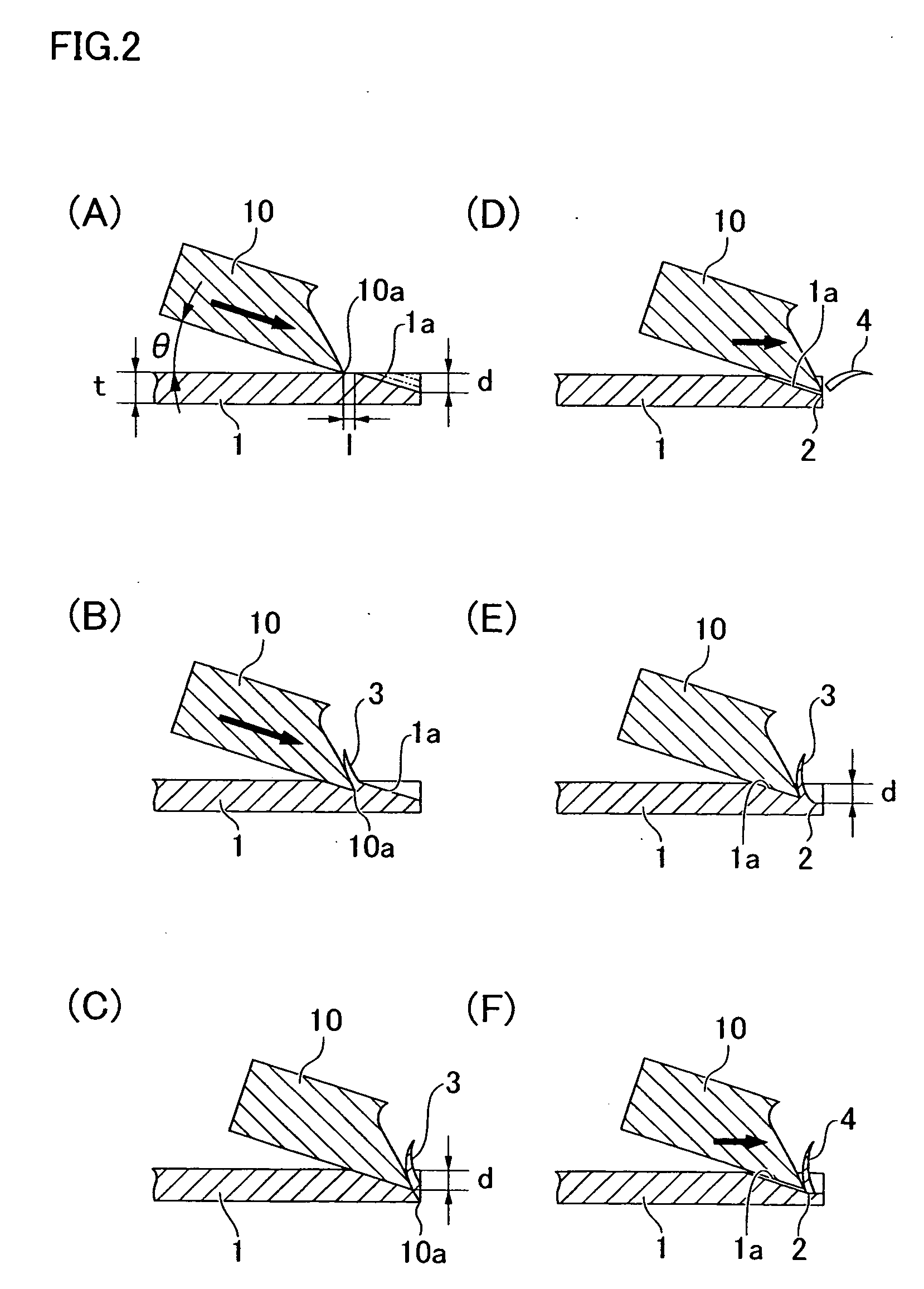Method of forming a recess in a work
a recess and work technology, applied in the field of recess forming, can solve the problems of deterioration of flatness beyond repair, serious problems, and worsening of punch durability, and achieve the effects of reducing stress on work, easy cutting, and easy formation
- Summary
- Abstract
- Description
- Claims
- Application Information
AI Technical Summary
Benefits of technology
Problems solved by technology
Method used
Image
Examples
embodiment 1
[0040]FIG. 1 shows the configuration of a work 1 in which a recess 2 is formed. The material used in the work 1 is iron, aluminum, copper, stainless steel, other metals, or engineering plastic or another synthetic resin that can be cut. The work 1 is preferably configured in the shape of a flat plate, block, or sphere formed to allow the formation of the recess 2.
[0041]The work 1 shown in FIG. 1 is a metal plate that can be cut and that has been formed into a square shape having a thickness t ranging from 0.2 to several millimeters. The recess 2 is formed on one side of the work 1 and has a width W that is smaller than the width of the work 1 and a depth d that is smaller than the thickness t. The recess 2 is formed by a cutting tool 10. In the work 1 shown in FIG. 1, the forward-end side of the recess 2 is opened, and a slanted worked surface 1a is formed on the rearward-end side.
[0042]The cutting tool 10 is formed having a blade part 10a extending in a direction perpendicular to t...
embodiment 2
[0052]A method was described above in Embodiment 1 in which the recess 2 having the prescribed width W was formed using the cutting tool 10 set to have the same width W, but the steps for forming the recess are preferably repeated a plurality of times depending on the material and hardness of the work 1 and the capabilities of the moving apparatus, or when forming a wide recess. FIG. 6 shows an example application for such instances.
[0053]In FIG. 6, a width W10 of the cutting tool 10 is set to be smaller than a width W2 of the recess 2 of the work 1. The width W10 of the cutting tool 10 in this instance is preferably set narrow so as to be a fraction of the width W2 of the recess 2. The width in the example in FIG. 3 is set to be one half of the width of the recess 2. The width W10 of the cutting tool 10 may not necessarily need to be set as a fraction if a neighboring second recess 2d is to be formed overlapping an initially formed recess 2c.
[0054]As shown on the right side of FIG...
embodiment 3
[0055]FIGS. 7(A) through 7(F) show a method for forming in advance the worked surface 1a when forming the recess 2 from the planned location of the recess-forming surface located on the upper surface of the work 1. First, as shown in FIG. 7(A), the blade part 10a of the cutting tool 10 is moved in the carving direction at the angle θ and is inserted so as to cut into one end of the planned location of the work 1. A small fin 1b is thereby made to rise from the upper surface of the work 1. The cutting tool 10 is then moved in the carving direction from a position set apart from the fin 1b, and the next fin 1b is formed. The formation of the fin 1b is repeatedly performed thereafter. A plurality of the fins 1b are formed until eventually the blade part 10a of the cutting tool 10 reaches the depth d of the planned recess 2, as shown in FIG. 7(B). As a result, a worked surface 1c is formed on one side below the bottom surface of the cutting tool 10. The direction of movement of the cutt...
PUM
| Property | Measurement | Unit |
|---|---|---|
| angle | aaaaa | aaaaa |
| thickness | aaaaa | aaaaa |
| depth | aaaaa | aaaaa |
Abstract
Description
Claims
Application Information
 Login to View More
Login to View More - R&D
- Intellectual Property
- Life Sciences
- Materials
- Tech Scout
- Unparalleled Data Quality
- Higher Quality Content
- 60% Fewer Hallucinations
Browse by: Latest US Patents, China's latest patents, Technical Efficacy Thesaurus, Application Domain, Technology Topic, Popular Technical Reports.
© 2025 PatSnap. All rights reserved.Legal|Privacy policy|Modern Slavery Act Transparency Statement|Sitemap|About US| Contact US: help@patsnap.com



